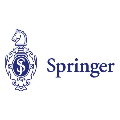The physical layer security (PLS) is investigated for reconfigurable intelligent surface (RIS) assisted wireless networks, where a source transmits its confidential information to a legitimate destination with the aid of a single small RIS in the presence of a malicious eavesdropper. A new joint RIS location and passive beamforming (J-LPB) optimization scheme is proposed for the sake of maximizing the secrecy rate under the RIS location constraint and the constraint that the modulus of the reflecting coefficient at each RIS's unit is not larger than 1. Specifically, we analyze the optimal location of the RIS, and conclude that the product involving the source-RIS distance and the RIS-destination distance should be minimized. Since the product minimization problem is nonconvex, we then propose a two-tier optimization algorithm for solving it. Based on the near-optimal RIS 3D location obtained, we further formulate the passive beamforming optimization problem, and then propose to apply the Charnes-Cooper transformation along with the sequential rank-one constraint relaxation (SROCR) algorithm to solve it. Our numerical results show that the secrecy rate of the proposed J-LPB optimization scheme is higher than that of the benchmarks. Explicitly, we use the following benchmarks: the near-source-based RIS location and passive beamforming (NSB-LPB) optimization scheme, the near-destination-based RIS location and passive beamforming (NDB-LPB) optimization scheme, and the random RIS location and passive beamforming (R-LPB) optimization scheme. Finally, the benefits of our J-LPB scheme are further increased with the number of RIS units.
翻译:物理层安全(PLS) 用于对可重新配置的被动智能表面(RIS) 辅助无线网络进行调查,在这种网络中,一个源在恶意窃听器在场的情况下,借助一个小的RIS协助,将其机密信息传送到合法目的地。由于产品最小化问题是非相容的,我们然后提出一个双层优化算法来解决它。根据获得的接近最佳的RIS 3D 位置,我们进一步制定被动的优化问题,然后建议将Charnes-Cooper 单位的反映系数的模数与RIS的最佳位置,我们分析其最佳位置,并得出结论,涉及源-RIS距离和RIS-目的地距离的产品的产品应被最小化。由于产品最小化问题是非相容,我们提出一个双层优化算法,根据接近最佳的RIS 3D 位置,我们进一步拟订被动的优化问题,然后提议将Charnes-Cooper 单位与连续的一级限制(SRIS-RIS) 升级(SRCRR) 和Restal-ral 方法的升级法比我们最接近的系统更精确的系统更精确的系统更精确的系统更精确的系统更精确的系统更精确化。



